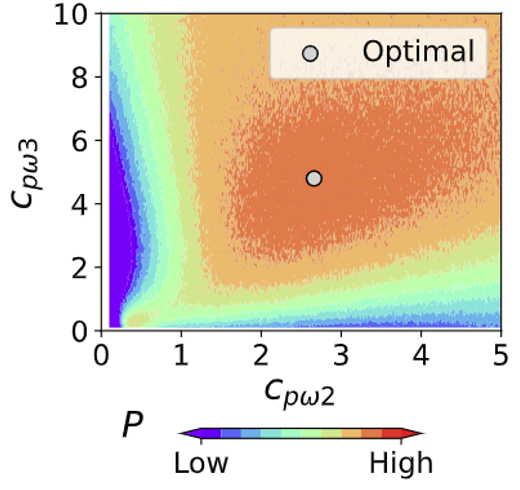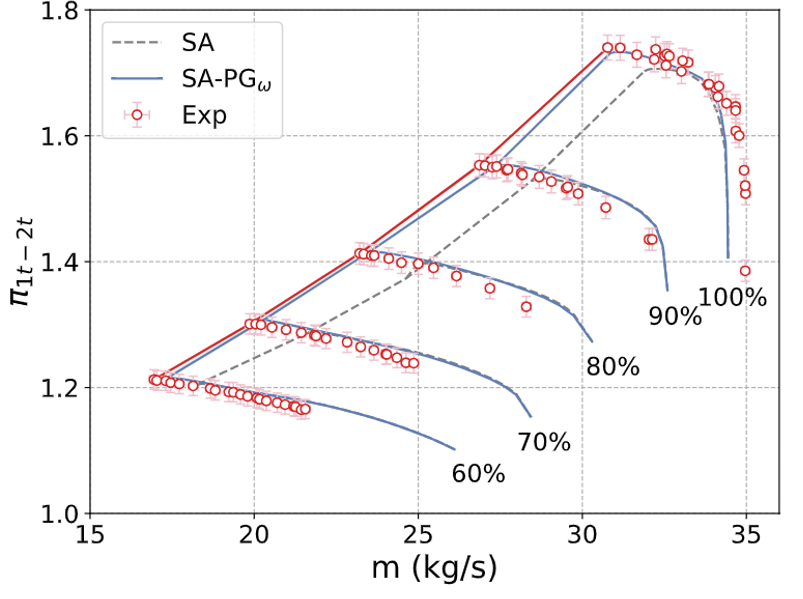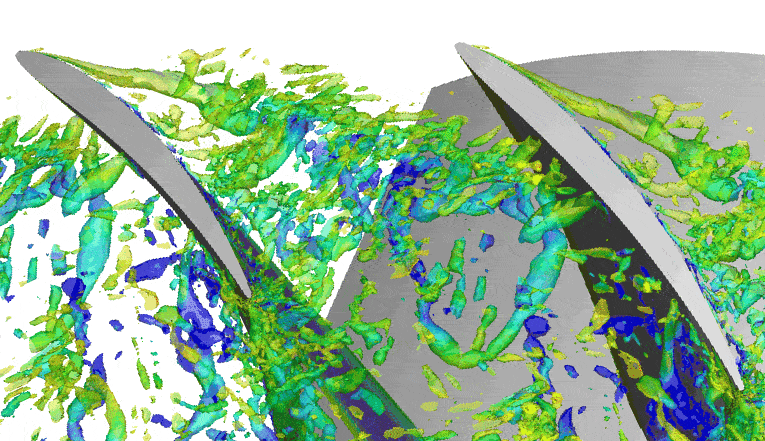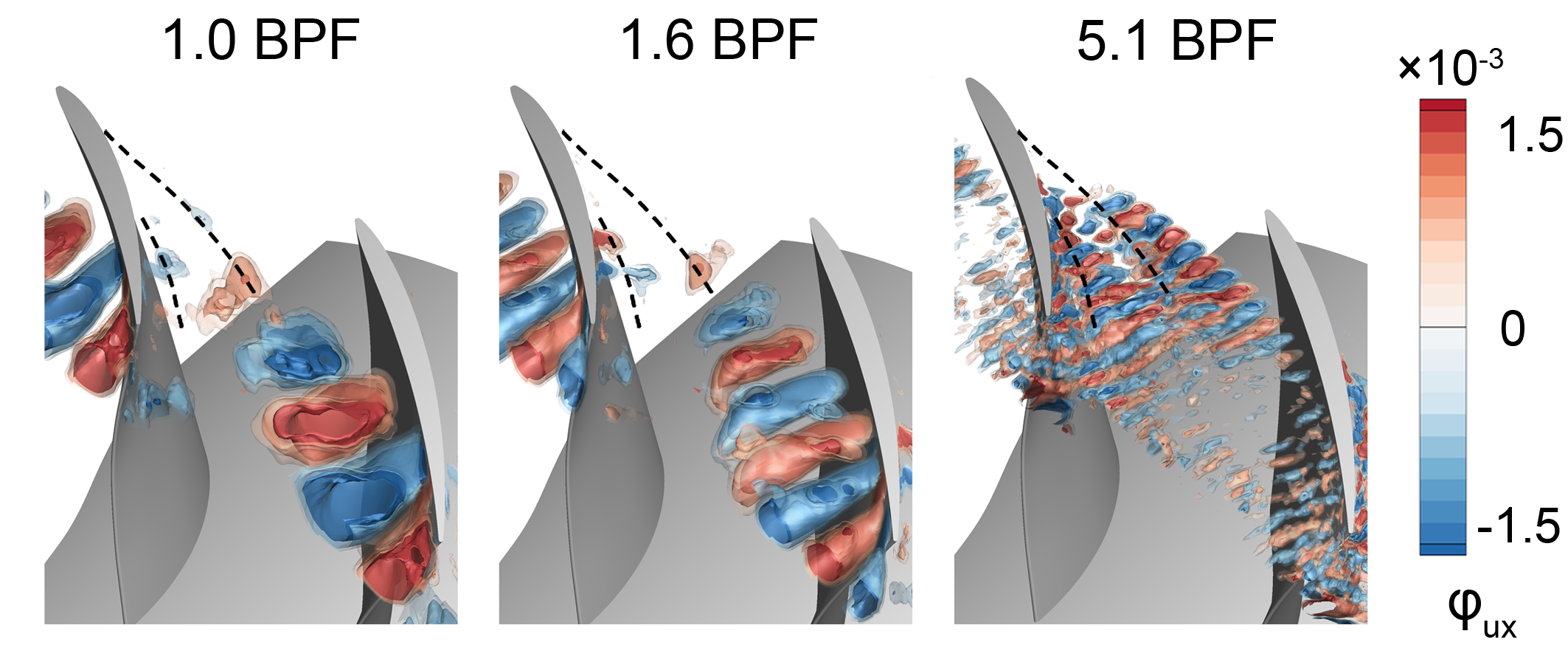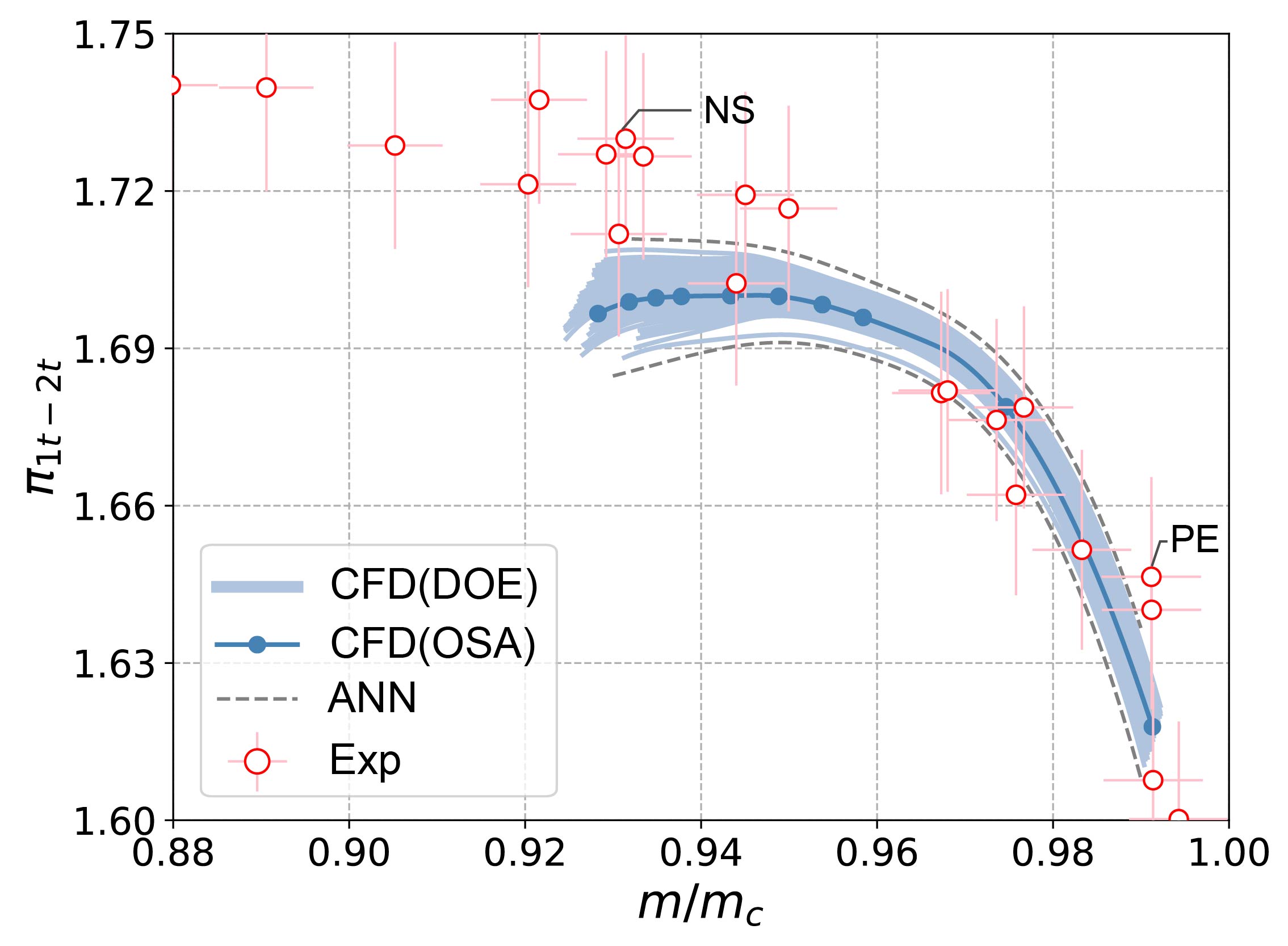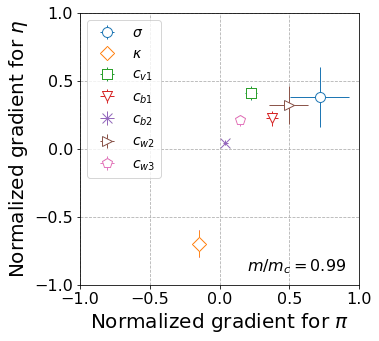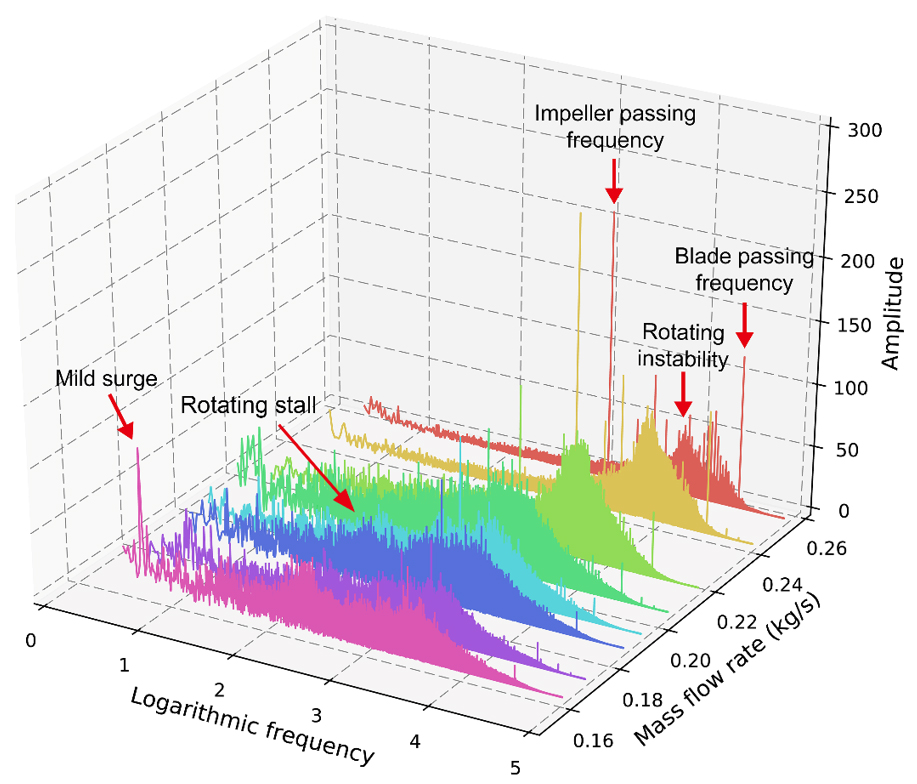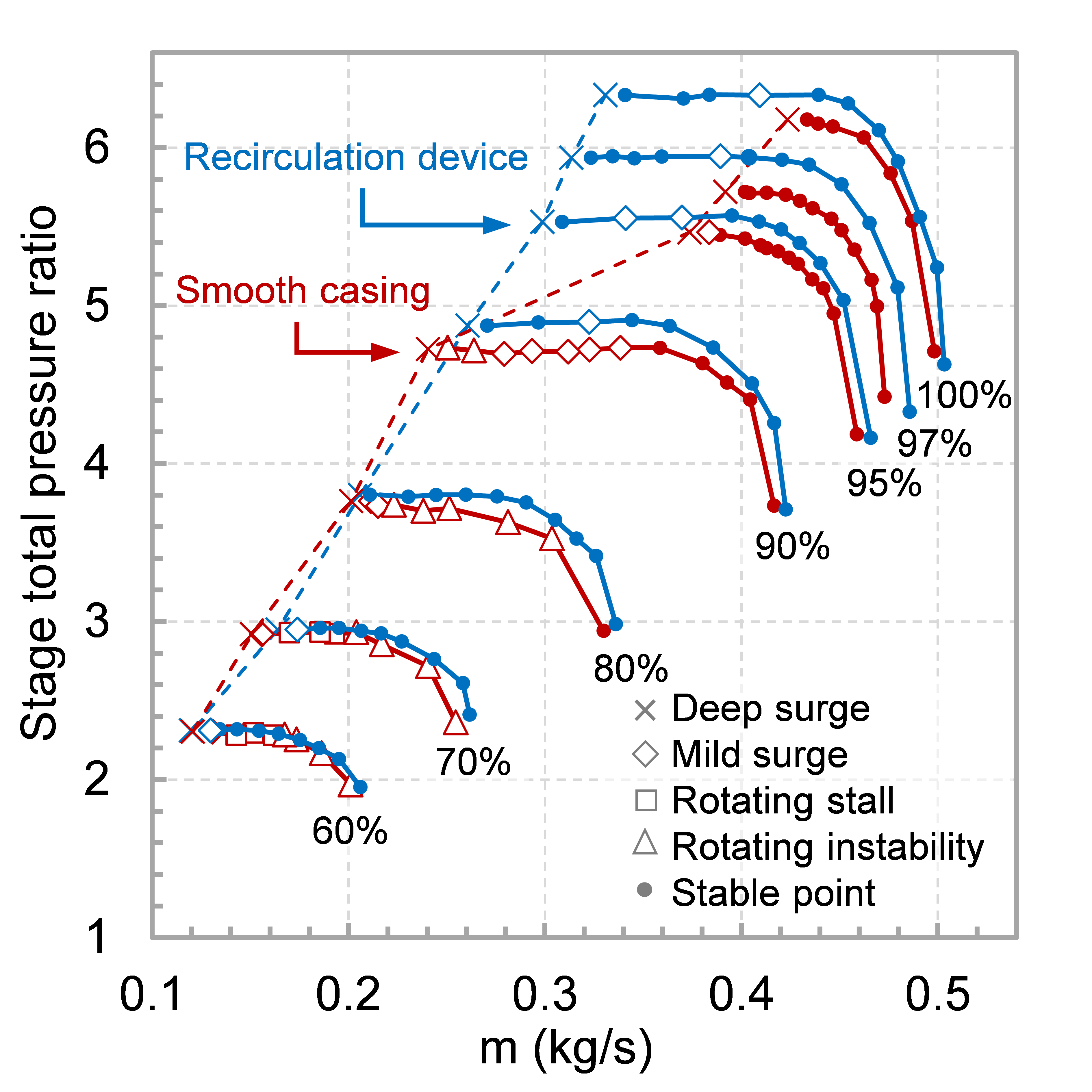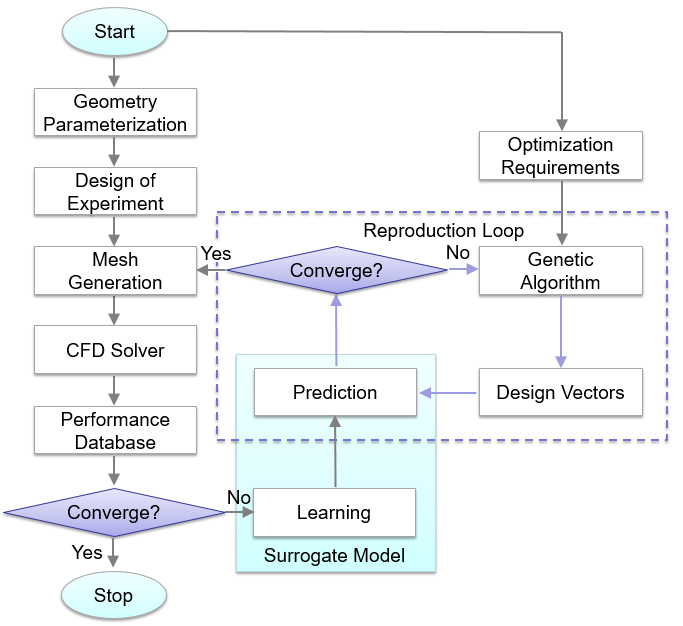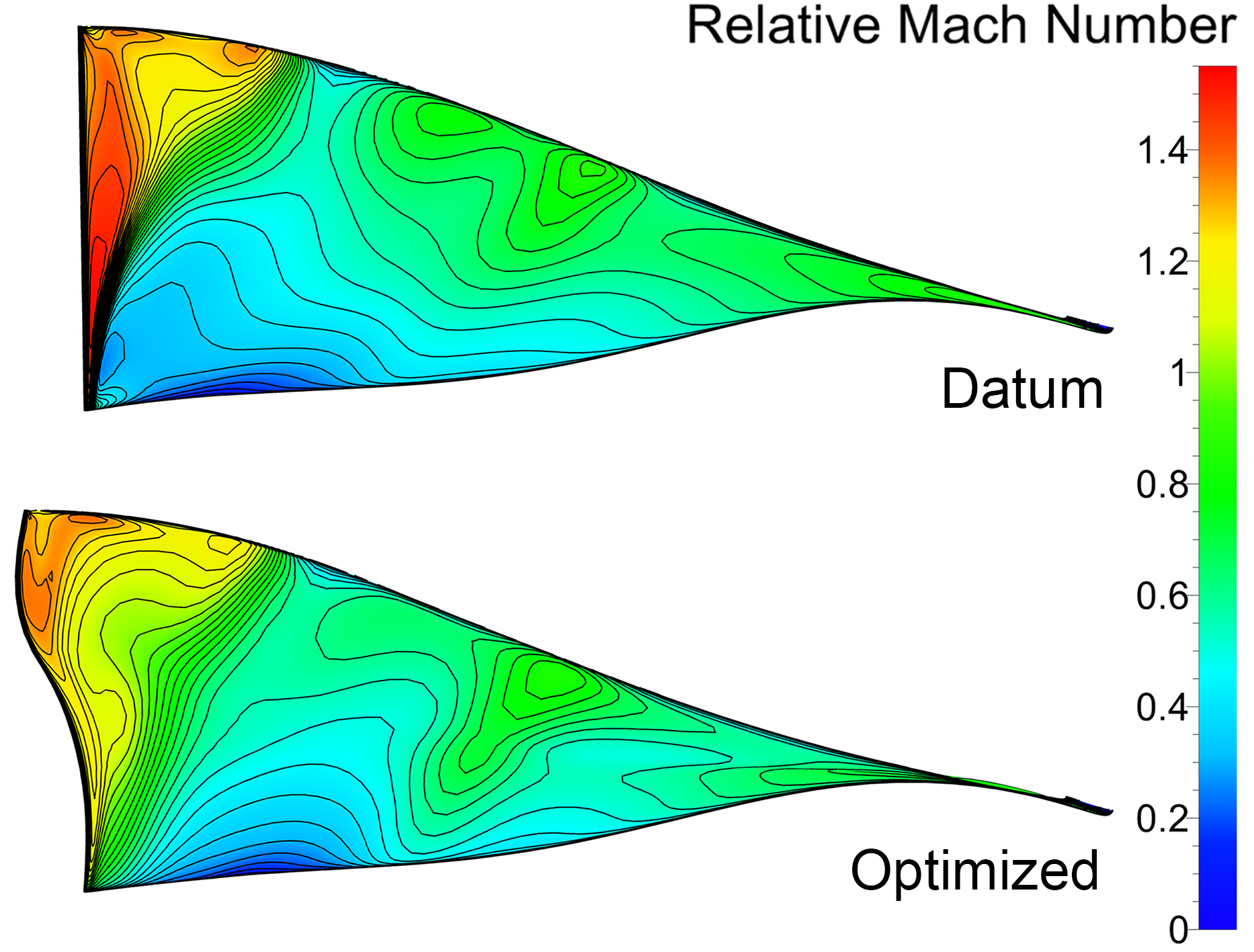Turbulence Modeling
- A Turbo-Oriented Data-Driven Modification to the SA Turbulence Model
- He, X.*, Zhao, F., and Vahdati, M., “A Turbo-Oriented Data-Driven Modification to the Spalart-Allmaras Turbulence Model,” ASME Journal of Turbomachinery, 2022, 144(12), 121007. [preprint] [doi]
- He, X.*, Zhao, F., and Vahdati, M., “Evaluation of Spalart-Allmaras Turbulence Model Forms for a Transonic Axial Compressor,” 2020, GPPS Paper No. GPPS-CH-2020-0013. [preprint] [doi]
- Detached Eddy Simulation for Separated Compressor Flows
- He, X.*, Zhao, F., and Vahdati, M., “Detached Eddy Simulation: Recent Development and Application to Compressor Tip Leakage Flow,” ASME Journal of Turbomachinery, 2022, 144(1), 011009. [preprint] [doi]
- He, X.*, Fang, Z., Rigas, G., and Vahdati, M., “Spectral Proper Orthogonal Decomposition of Compressor Tip Leakage Flow,” Physics of Fluids, 2021, 33(10), 105105. [preprint] [doi]
- Parametric Uncertainty Quantification of RANS Turbulence Model
- He, X.*, Zhao, F., and Vahdati, M., “Uncertainty Quantification of Spalart-Allmaras Turbulence Model Coefficients for Compressor Stall,” ASME Journal of Turbomachinery, 2021, 143(8), 081007. [preprint] [doi]
- He, X.*, Zhao, F., and Vahdati, M., “Uncertainty Quantification of Spalart-Allmaras Turbulence Model Coefficients for Simplified Compressor Flow Features,” ASME Journal of Fluids Engineering, 2020, 142(9), 091501. [preprint] [doi]
Spalart-Allmaras (SA) turbulence model is one of the most popular models for compressor aerodynamics. However, it often underpredicts the compressor stall margin. Such a deficiency mainly routes from the empirical assumptions made in the constitutive relation (e.g., linear eddy viscosity relation) and the transport equation (e.g., equilibrium turbulence). Previous researchers have proposed different flavors of the SA model to improve the model accuracy, including SA-QCR (quadratic constitutive relation), SA-RC (rotation and curvature correction), SA-H (helicity correction) and SA-PG (pressure gradient correction). From an evaluation study on both compressor flows and canonical flows, however, none of the flavors showed significant improment on compressor flows without deteriorating canonical flows.
In this research, we proposed a new flavor of the SA model namely SA-PG ω . The modification is based on a dimensionless vortical pressure gradient term (i.e., PG ω ). It effectively identified both the tip leakage blockage and the hub corner blockage; whereas in 2D flows and rotor-stator interface flows, the modification is automatically switched off. To calibrate the new model coefficients, Bayesian inference was adopted to give a robust coefficient set. The calibrated SA-PG ω showed improved prediction on NASA Rotor 67, TUDa-GLR-OpenStage, BUAA Stage B Rotor and Lyon linear compressor cascade.
Related publication:
Advisor: Prof. Mehdi Vahdati
*Winner of the Katopodis Prize of Imperial College London (2023); finalist of ASME Turbo Expo Turbomachinery Committee Best Paper Award (2022).
High-fidelity turbulence data are indispensable for training a data-drive RANS turbulence model. Hybrid RANS/LES methods (e.g., DES-type methods) are the most cost-effective for turbomachinery flows featured by high Reynolds numbers and Mach numbers. In this research, we reviewed the state-of-the-art upgrades of DES methods and identified a combination of upgrades for compressor tip leakage flow. The upgraded DES method is implemented in the in-house flow solver HADES, and then successfully validated against PIV measurement data of BUAA Stage B rotor.
Based on the database generated by the upgraded DES method, spectral proper orthogonal decomposition (SPOD) is then performed to analyze the modal component of the tip leakage flow. Large-scale coherent structures are identified in the tip blockage zone downstream of the tip leakage vortex breakdown. These structures play a crucial role in turbulence modeling of tip leakage flow and non-synchronous vibration of compressor blades.
Related publication:
Advisor: Prof. Mehdi Vahdati, Dr. Georgios Rigas
RANS turbulence models are deficient in predicting compressor near-stall flows due to the uncertainties involved in the model development procedures. In this research, the parametric uncertainty of the Spalart-Allmaras turbulence model is investigated in canonical flows and NASA Rotor 67. An efficient metamodel-based UQ framework is established using the artificial neural network.
For the transonic axisymmetric bump and the backward-facing step cases, re-calibration of the model coefficients lead to contradictory results when considering multiple flow quantities of interest. For the NACA 0012 airfoil and the NASA Rotor 67 stall cases, the parametric uncertainty range envelopes the 2D airfoil stall point, but not for the 3D compressor stall point. These results highlight the need for a modified model form with respect to compressor flow features, i.e. 3D swirling motion and strong adverse pressure gradient.
Related publications:
Advisor: Prof. Mehdi Vahdati
